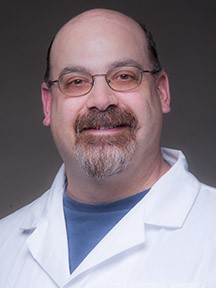By using chemical methods to coax atoms into novel configurations, Jamie Manson, a professor of chemistry at EWU, is able to produce new, potentially groundbreaking alignments of electrons. His ongoing work, funded by a newly renewed, three-year grant of more than $395,000 from the National Science Foundation, is helping to create the underpinnings for future quantum computing applications, a potentially game-changing breakthrough in data processing and storage.
While the widespread adoption of quantum computing is likely years away, scientists across the globe have embraced its possibilities. Manson’s contribution involves designing, building and testing molecular-level structures or “lattices” that host the electron arrangements he studies. Chief among these are “skyrmions,” intriguing but little understood phenomena first identified by the British scientist Tony Skyrme in the early 1960s.
“Skyrmions are a new class of spin textures or topologies wherein the electrons can adopt particular alignments that can be easily switched using external stimuli such as magnetic or electric fields,” Manson says. “This switching behavior is ideal for applications such as computing, memory storage and other device technologies.”

The NSF grant, for which Manson in the sole principal investigator, is his fourth consecutively funded project from the agency. It will allow him to not only continue his own work, but will also fund participation of a number of Eastern undergraduate researchers; students whose daily activities will mostly be centered around tasks in chemical synthesis, optical spectroscopy and X-ray diffraction. “Over the coming year,” he says, “I plan to attract at least six students to work on the project.”
Manson’s work with students was of particularly interest to evaluators at NSF’s Division of Materials Research, the area of the agency that approved his grant proposal.
“EWU students have ample opportunities to participate in experiments; meet and interact with collaborators; assist in data analysis and prepare manuscripts for publication; help shape future research directions; and present their results at conferences and workshops,” the award abstract reads. “For this project, Professor Manson has established a diverse undergraduate research group that consists mostly of women, a group largely underrepresented in STEM.”
Manson says an added benefit for students includes the likelihood of their working with him and other scientists at some of the nation’s most advanced research facilities.
“Further experiments, depending on what we find from the X-ray studies, will require travel to user facilities such as the National High Magnetic Field Laboratory, NIST Center for Neutron Research and the Oak Ridge National Laboratory,” says Manson. “Student summer stipends, travel support to participate in these experiments and to attend conferences are covered under this grant.”

